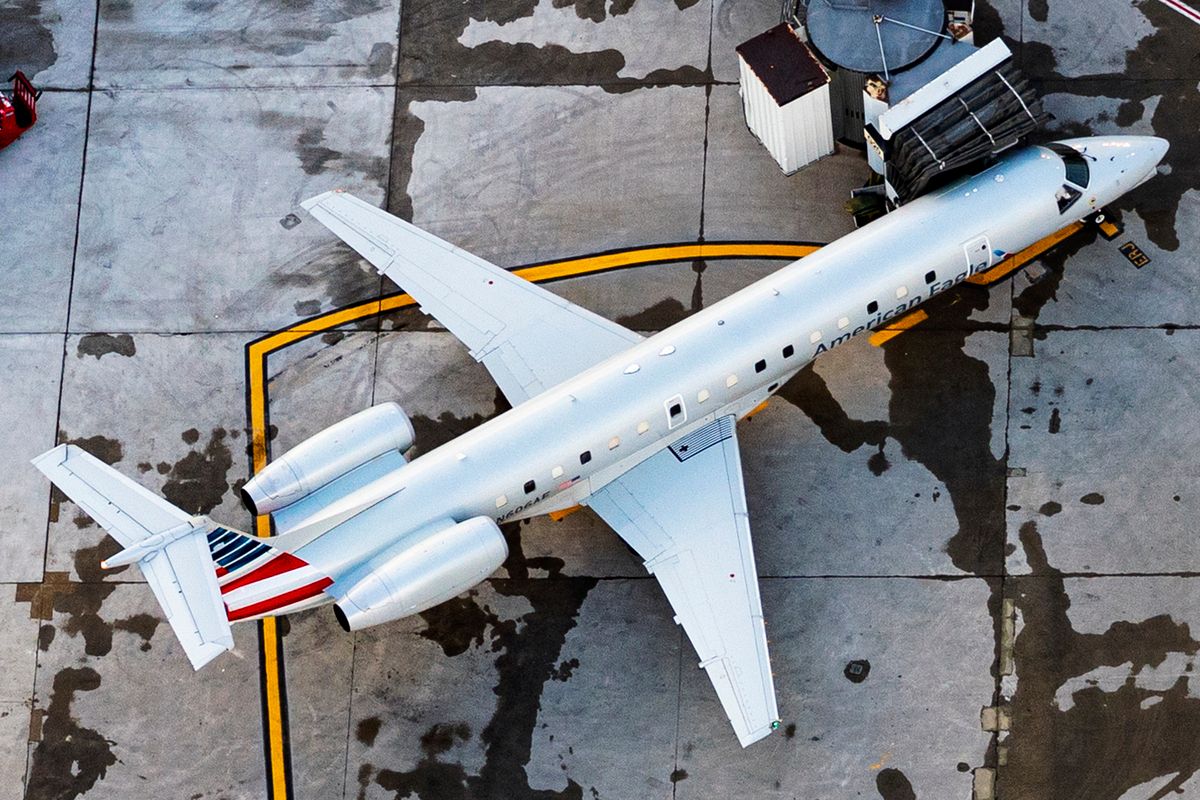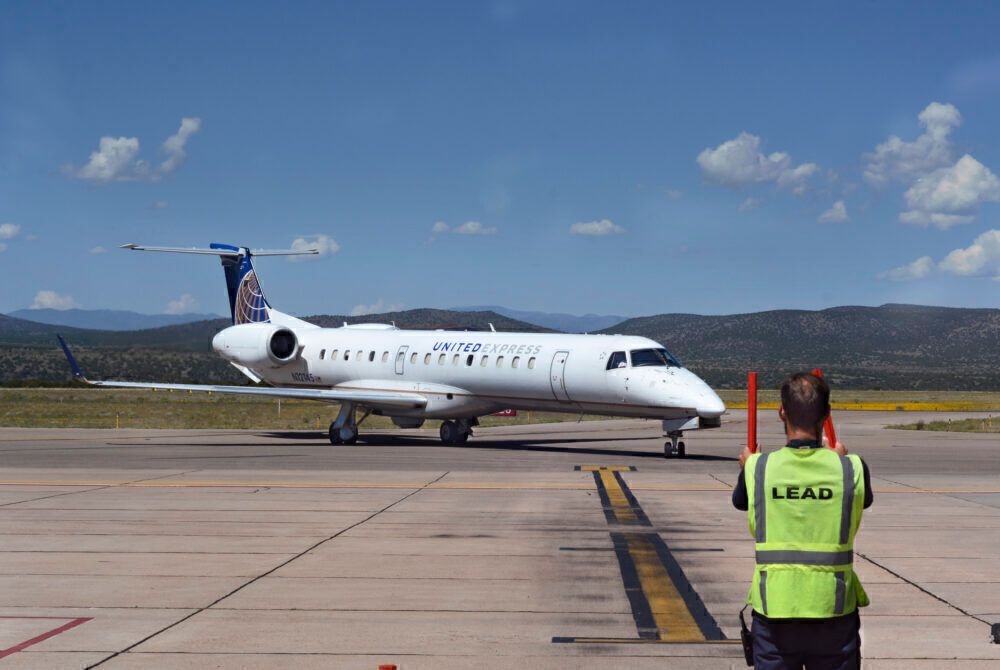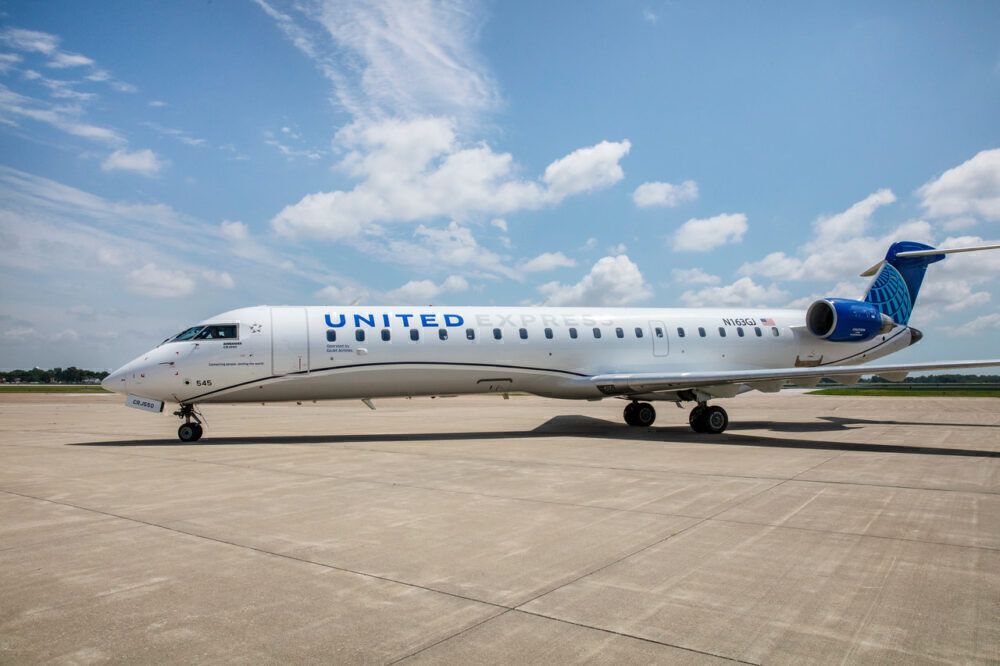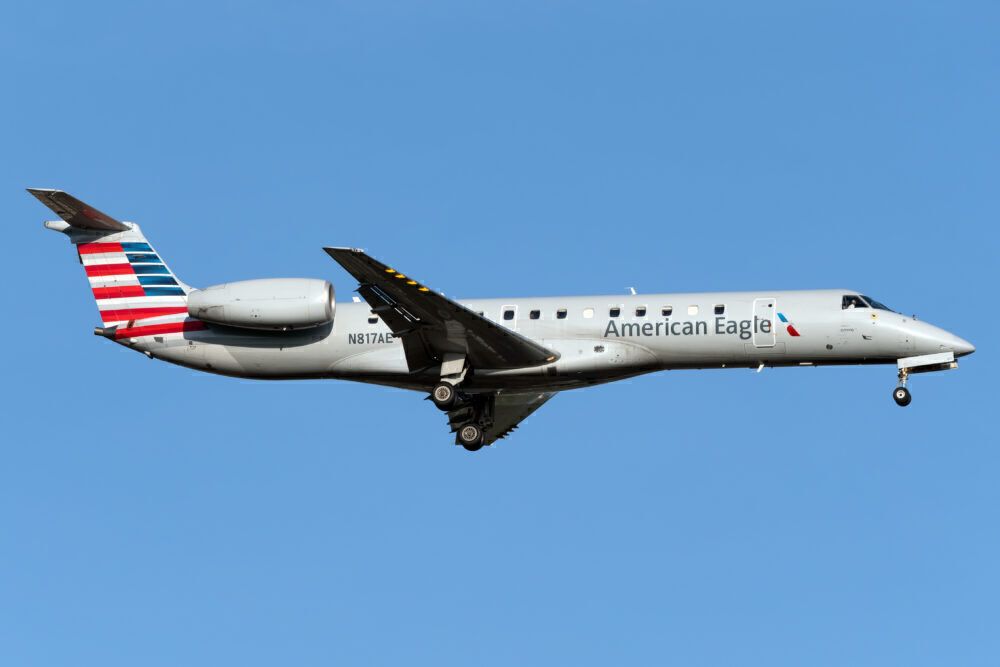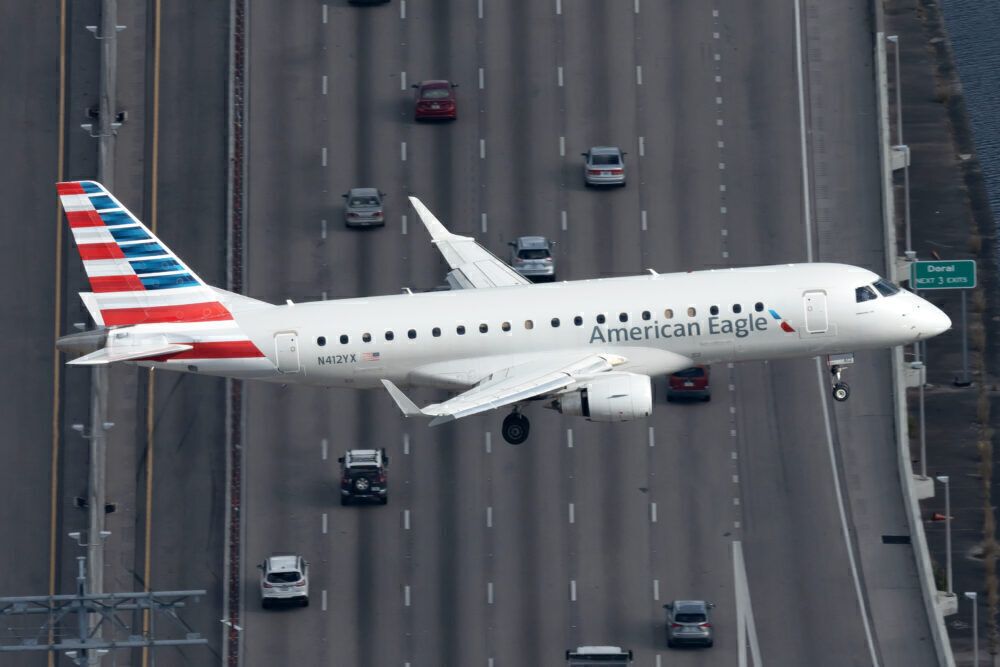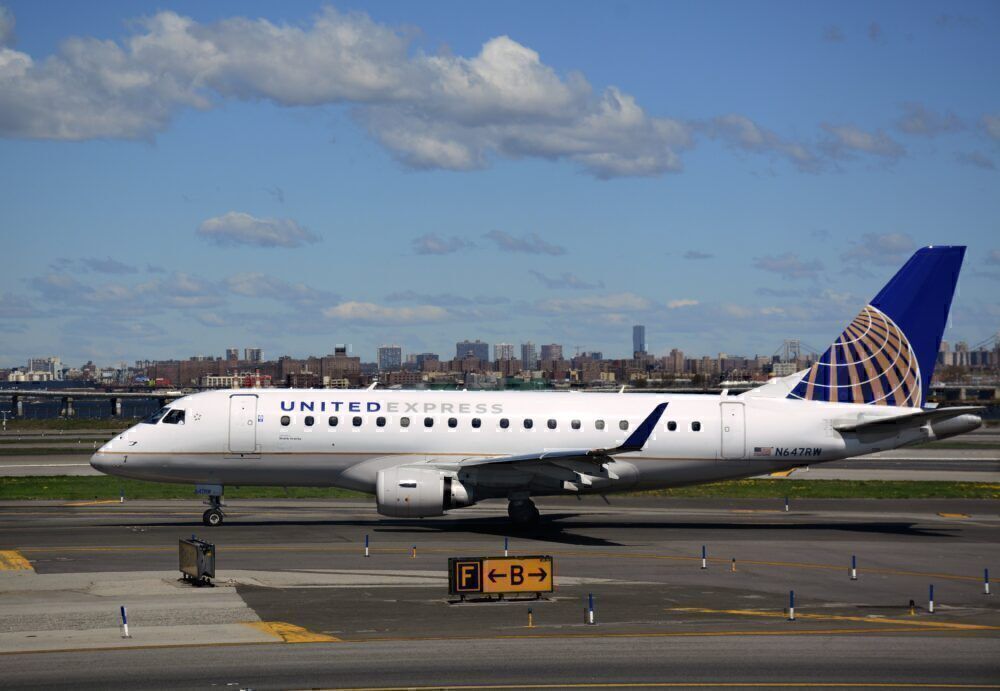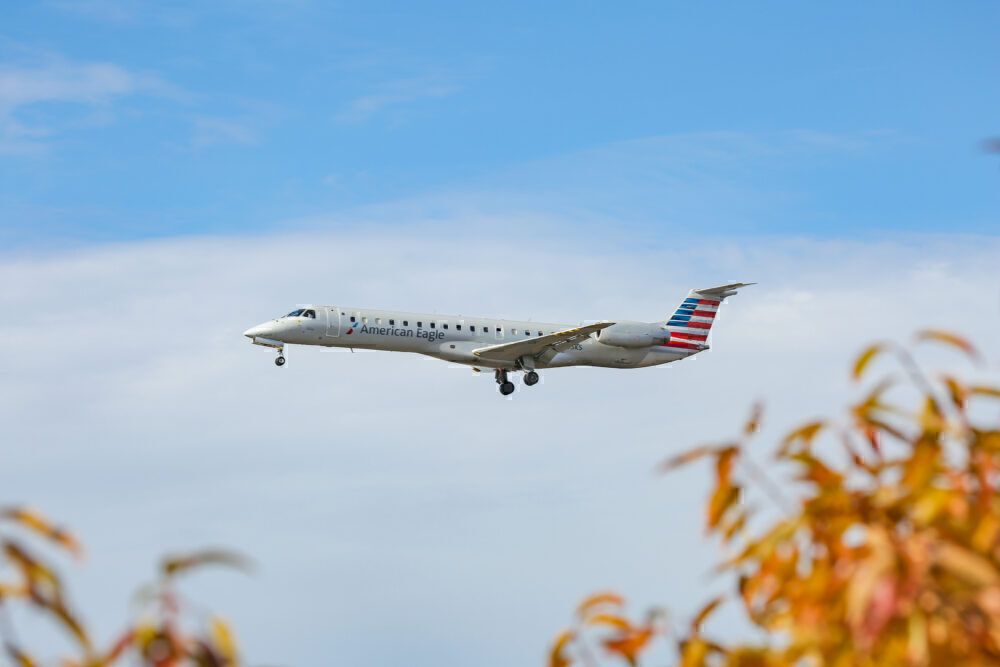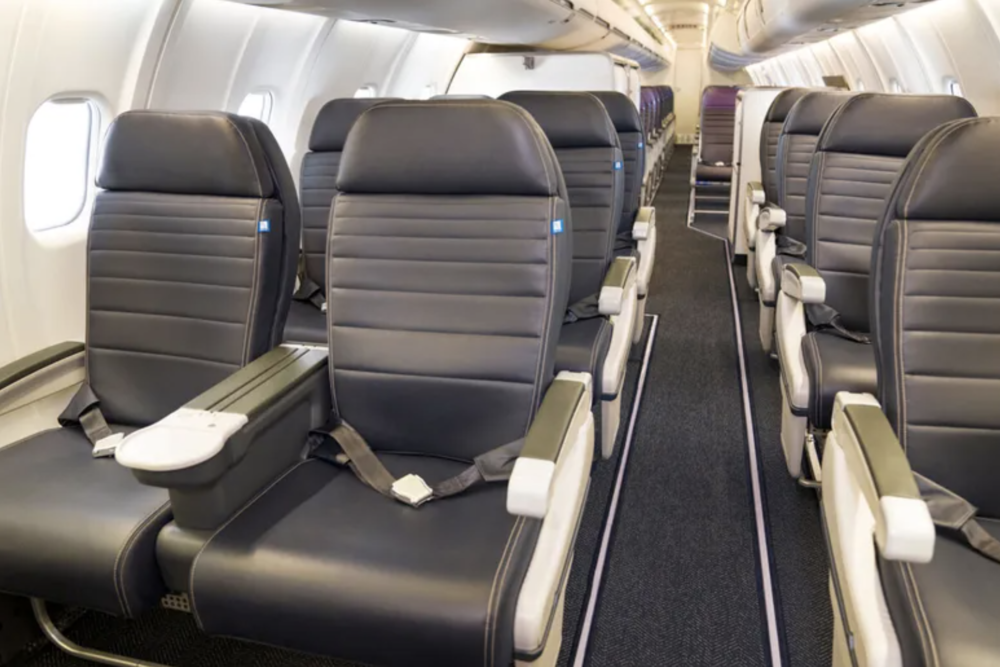Two major New York operators have announced that they are moving away from all-economy 50-seater operations. This means planes like the Bombardier CRJ200 or Embraer ERJ145 will be flying far less. American Airlines expects to remove all 50-seater regional aircraft from New York by the summer, while United Airlines plans to do so by 2022.
United announces an end to 50-seater operations in New York
From its hub at Newark-Liberty International Airport (EWR), United will remove single-class 50-seater regional jets by 2022. On the airline's first-quarter earnings call, Andrew Nocella, CCOr, stated the following:
“We also took the opportunity in the pandemic to rationalize our use of single-class 50-seat RJs down to three partner airlines, allowing us to deliver a more reliable and cost-efficient product. Our fleet of dual-class 50-seat CRJ550 continues to expand, allowing us to deliver world-class product in smaller communities across the United States. We're now on track to operate our full schedule from Newark later this year after slot waivers have ended and all flights will be operated with dual-class aircraft by the time we get into 2022. NPS results from our CRJ550 passengers are some of our best.”
United uses single-class regional jets to service smaller communities, such as Presque Isle and Burlington, and servicing other short-haul routes such as Washington-Dulles, Rochester, and others.
The CRJ550
Replacing many of those all-economy 50-seaters are premium CRJ550 aircraft. In the shell of a CRJ700, United has opted to only outfit those aircraft with 50-seats in a premium configuration. There are 10 recliner-style first class seats, 20 extra-legroom economy seats, and 20 standard economy seats onboard.
While traditional 50-seater jets typically are not known for comfort or convenience, United's CRJ550s are. These aircraft feature an extra storage area for larger carry-on baggage, which normally cannot fit in overhead bins. Also, United has offered a snack bar onboard for first class customers.
American Airlines cuts 50-seater operations in New York
As part of American's new partnership with JetBlue, the carrier has decided to remove 50-seat regional jets from service in New York. These aircraft, which had a significant presence at John F. Kennedy International Airport (JFK), flew short-haul routes such as between Baltimore and New York, and some longer routes, such as between Nashville and New York.
These routes, which American could previously not make work with larger aircraft, will either be getting an upgrade or will be cut to support flying to other cities, such as long-haul international destinations.
Operating 50-seaters in expensive markets
Operating into New York–JFK and Newark is no cheap task. Both airports are slot controlled, and operating a regional jet when a carrier could fly a larger aircraft is indicative of a tough competitive position.
For American Airlines, in New York City, the carrier had a 10% originating share in the air market. It was, in the words of chief revenue officer, Vasu Raja, "too small to win and too big to go and exit." Moreover, the airline needed to fly 50-seat aircraft into the airport.
With use it or lose it rules on slots, some of those 50-seat operations were designed mainly around ensuring American would retain valuable slots, even if it did not have a specific, high-yield plan in mind for them at the time. Operating regional jets was one way for the carrier to avoid flying larger aircraft that could be difficult to fill at a profit.
On the other hand, United has a massive hub in Newark, and 50-seater jets hold special importance. At a hub, United is focused on ensuring it has enough connecting feed. 50-seaters let the airline serve small destinations that otherwise would not receive air service from United and connect those passengers to other destinations in the US. On shorter haul routes, such as between Newark and Dulles, the jets allow the carrier to offer more frequencies without flying larger jets that are more uneconomical on some of those very short routes.
The jets were not passenger favorites
Few passengers find joy in flying 50-seater regional jets. They are small, usually have limited overhead and onboard bin space, and lack other amenities. In competitive markets, onboard products are essential.
Take a route such as New York to Nashville, where American used to fly a 50-seater regional jet. The competition is flying larger aircraft, perhaps other regional jets like an Embraer E170 that offers a premium cabin and feels a little less cramped than an ERJ145. Other airlines offer mainline aircraft like a Boeing 737 on the route.
As a result, American did not have a competitive advantage on the route. And, for the passengers connecting from, say, New York to London, passengers could choose from a host of other options, like a connection in Atlanta or Philadelphia, where they may not need to check a carry-on bag or could fly a better aircraft than an ERJ145 or CRJ200.
Meanwhile, on short-haul, high frequency, and competitive routes such as between Washington D.C. and New York, regional jets were not going to cut it for the premium traffic that airlines are after. Both American and Delta are planning on doing mainline flying between D.C. and New York, so United has to up its game.
Stay informed: Sign up for our daily and weekly aviation news digests.
As American gains more market share, United needs to up its game
Through its partnership with JetBlue, American can grow its share of origination traffic, which means taking away some share from other carriers without necessarily generating as much new traffic to let other airlines keep their existing share.
While United has a hub in Newark, it also relies on some origination traffic from New York. As such, it needs to ensure it has a solid offering to persuade customers to come over to New Jersey to catch a flight with them. One way to do so is by offering a more premium experience, hence increased CRJ550 flying out of the Newark hub.
For passengers, this is a win since it means new and improved options from, arguably, one of the most premium and largest air markets in the world. This leaves Delta left to catch up with its peers and end 50-seat regional flying out of New York. It has not announced plans for that yet.
Are you glad to see single-class 50-seaters leaving New York? Let us know in the comments!

